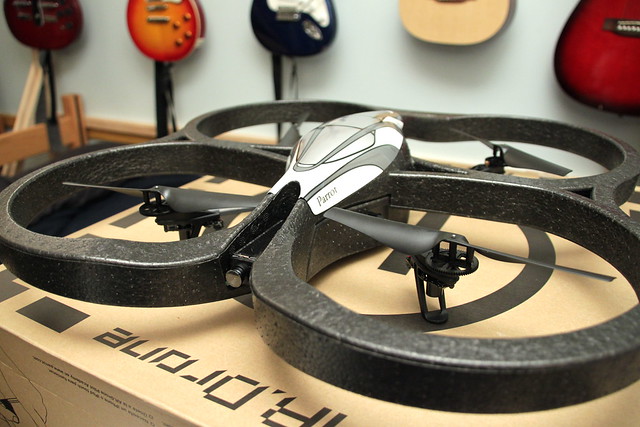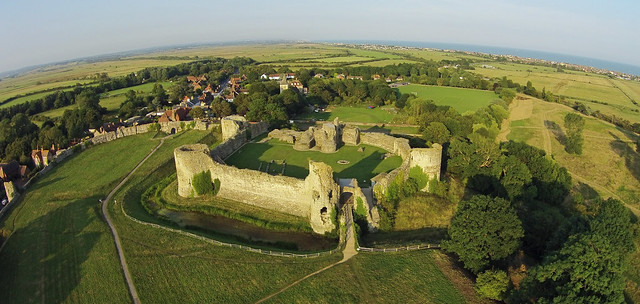One of the more interesting and perhaps useful trends in photography over the last year or two has been the emergence of aerial photography in the form of drones. Once the preserve of commissioned photographers or dedicated aerial specialists, photography from above is now is within the reach of anyone that can afford a mid level DSLR. Today we are going to look at the impact of drones on photography and the pros and cons of using one.
What exactly is a Drone?
A drone can be any remotely controlled aircraft that is capable of carrying a camera. It is not a new idea – RC Aircraft enthusiasts have been fitting small cameras to model aircraft for years. However, recent advances in technology means that it is much easier now not only to control these aircraft but also to feed live images back from them. The parallel development of rugged, small camera technology like GoPros has opened up the huge potential of drones as a tool for the photographer.
The most common type of drone are the quadcopter versions. These, as the name suggests use four propellers, helicopter style to provide a very stable and easily controlled platform. The built in electronics give a degree of stabilisation that allow novices to radio controlled aircraft to learn very quickly how to controls them. The larger the platform the more stable it will be, in general.

Photography from a Drone
Some drones are sold with a camera built in. Usually this will be an HD video camera, sometimes with stills capability. To be more flexible you can buy drones without cameras and retrofit your own. You need to carefully match up the drone with the camera to make sure it is capable of lifting it. Another advantage of using a separate camera is that you can add a stabilising platform in the form of a gimbal. These use small motors and gyros to stabilise the camera during flight and can greatly improve the quality of both video and stills.
When choosing a camera you need one that provides a FPV, first person view. That means it feeds back a live view from the drone, usually to a smartphone or tablet. The record button or shutter button can then be pressed as the subject comes into view. More advanced versions will even feed back live footage to virtual reality googles, giving you a very accurate look at what the camera is seeing.
Legal Issues
The rise of the drones has caught aviation authorities around the world on the hop a little. As more people acquire these craft, so more dangerous activities occur. The most dangerous activity is incursion into air traffic zones and for this reason organisations like the FAA in the US and the CAA in the UK are issuing strict guidelines on where drones can and cannot be operated. Beyond that, governments are now beginning to introduce legislation to control and possibly require licenses for drone operation. If you are looking at getting into drone photography, get in touch with the aviation authorities in your own country to fins out what the current rules are and what changes may be coming.
What Can I Shoot?
There are a lot of possibilities for drone photography although taking care to be safe is a major consideration. Real estate is an obvious and lucrative commercial application, the ability to get stills and video from above prime property can give the realtor a real edge when selling.
Drone photography has also been making inroads into wedding photography. This has been for the large outdoor group shots, drones making the ideal equipment for making images with interesting perspective and backgrounds. More controversially, some wedding photographers have been using these inside during the ceremony. Beyond the health and safety issues there are considerations such as disruption to the actual ceremony. For this I can see wedding venues clamping down on this practice.
Sports is another area where drones are being used, again under strict conditions and usually kept off the actual playing areas.
Wildlife is another obvious use of drone photography, but again, if you are going to do this, do plenty of research and contact experts in the animals you wish to shoot to make sure you are not going to stress them.
One of the key areas and probably least regulated and safest, is landscape photography. Flying a drone over a beautiful area of countryside or seascape can provide stunning photographs and footage, especially during the golden hours.
Drone photography is perhaps emerging from its wild west, unregulated era and emerging into a new more controlled era. Drones can provide unique, stunning and commercially viable images and footage. If you are prepared to get licenses and spend time studying how to fly a drone properly, you will be rewarded with some unique media.









